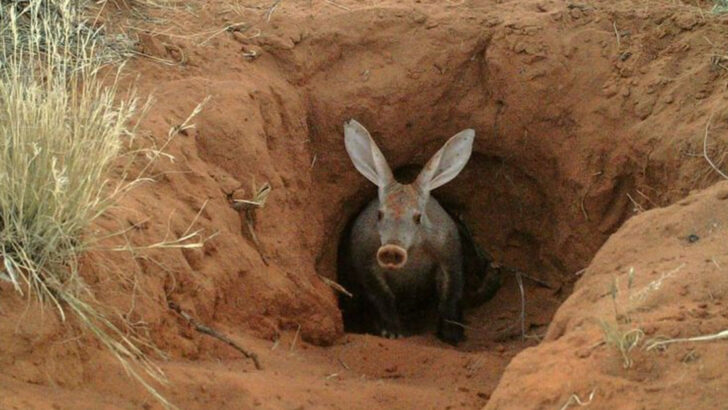They vanish into the earth—and sometimes don’t come back up for years. Some animals aren’t just burrowers—they’re underground legends. Hidden beneath forests, deserts, and swamps are creatures built for life in the shadows. They don’t just survive below the surface. They thrive there. From rodents that build vast underground cities to reptiles that sleep through years of drought, these animals have evolved to turn the dirt into a fortress. Some can slow their hearts, breathe less, and vanish into silence while the world changes above them. Think hibernation is impressive? These creatures take it to extremes.
Naked Mole Rat
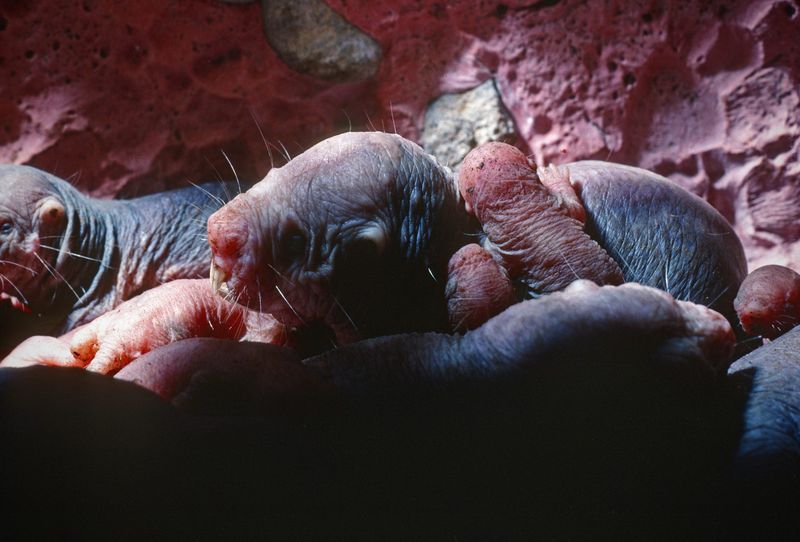
Naked mole rats are unique mammals known for their ability to thrive in underground colonies. With their hairless, wrinkled skin and large incisors, these rodents dig extensive tunnel systems. They can live up to 30 years, largely due to their low metabolic rate and resistance to cancer.
These social creatures live in colonies with a queen, similar to bees. Their ability to survive with low oxygen levels makes them fascinating. Did you know? Naked mole rats are almost immune to pain due to a unique mutation. Truly, they’re masters of the underground world.
European Mole
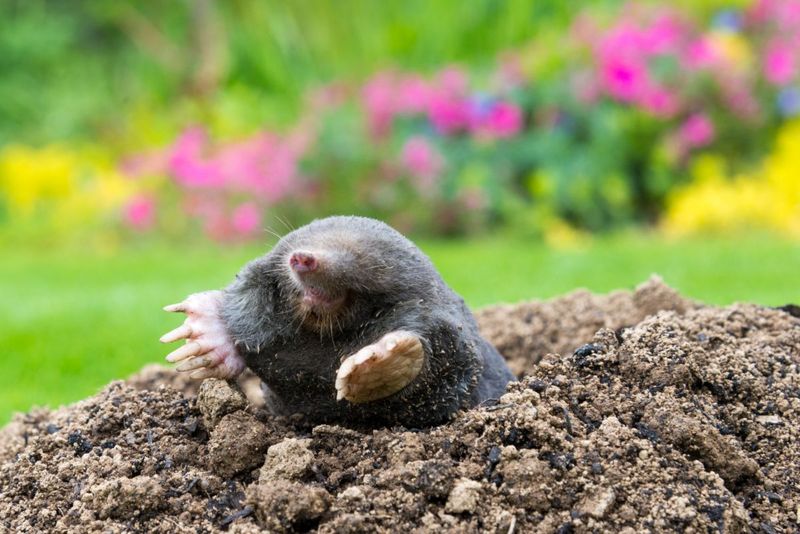
The European mole is well-known for creating complex tunnel networks. Its velvety fur and spade-like claws are perfectly adapted for digging. Moles can spend their entire lives underground, only occasionally surfacing.
Their sense of touch is highly developed, compensating for poor eyesight. Moles feed primarily on earthworms, which they can paralyze with a toxin in their saliva. Interestingly, moles have a special organ, the Eimer’s organ, that helps them sense vibrations in the soil.
Spadefoot Toad
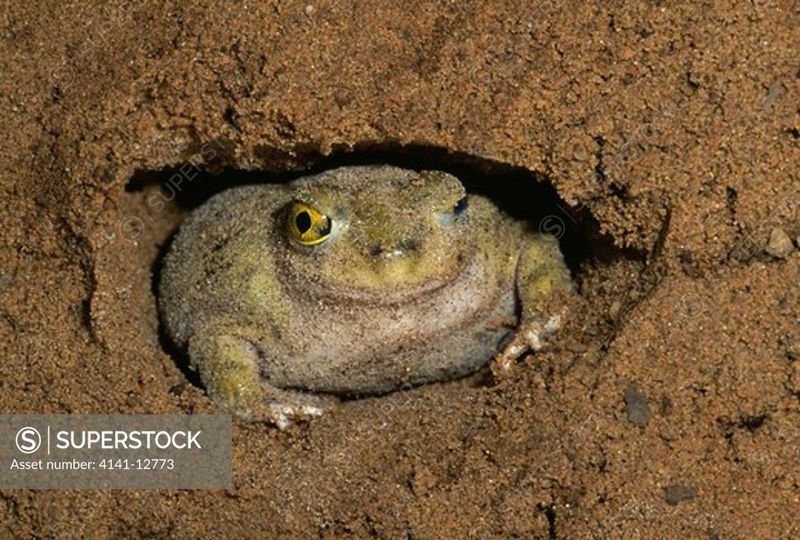
Spadefoot toads are amphibians equipped with spade-like hind feet, enabling them to dig into sandy soils. They can remain underground for long periods, especially during droughts.
These toads are known for their explosive breeding habits, emerging only after heavy rainfall. They can complete their life cycle in mere weeks. Their ability to survive extended dry spells by burrowing deeply makes them remarkable. Did you know? Spadefoot toads can absorb water directly through their skin while underground.
Wombat
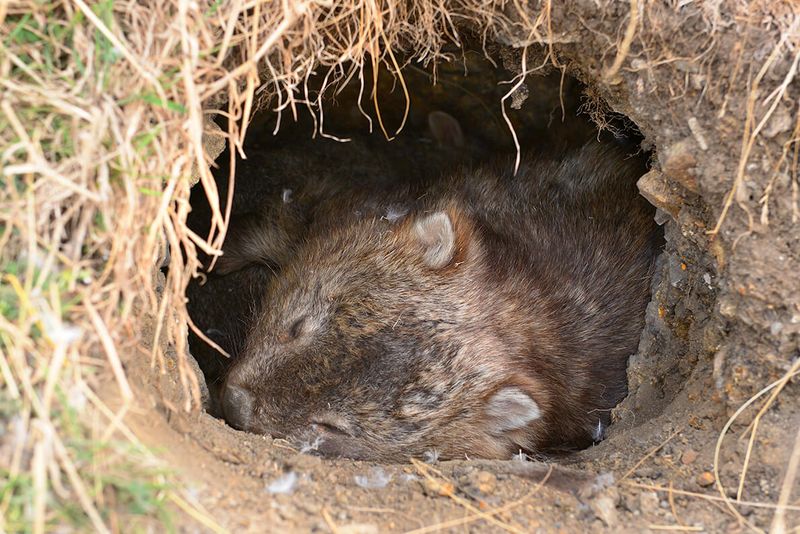
Wombats are marsupials native to Australia, famous for their burrowing skills. Their stocky bodies and strong claws allow them to dig extensive burrow systems that provide shelter and protection.
Wombats are nocturnal creatures, spending most of their days underground to escape the heat. Their burrows can be several meters long, providing a safe haven. Interestingly, wombats have cube-shaped droppings, which they use to mark their territory without them rolling away. This unique trait helps in identifying their presence.
Prairie Dog
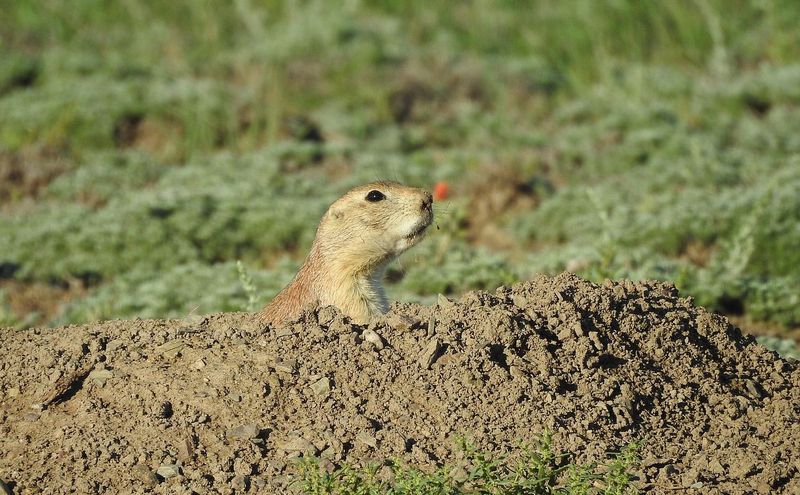
Prairie dogs are social rodents that create complex underground colonies known as “towns.” These towns can cover large areas, with intricate tunnels and chambers.
Prairie dogs play a crucial role in their ecosystem by aerating the soil and providing habitats for other species. Their communication skills are advanced, with various calls for different threats. These rodents are not only fascinating for their social structures but also for their ecological impact. Did you know? Prairie dogs have a sophisticated language with distinct sounds for various predators.
Fennec Fox
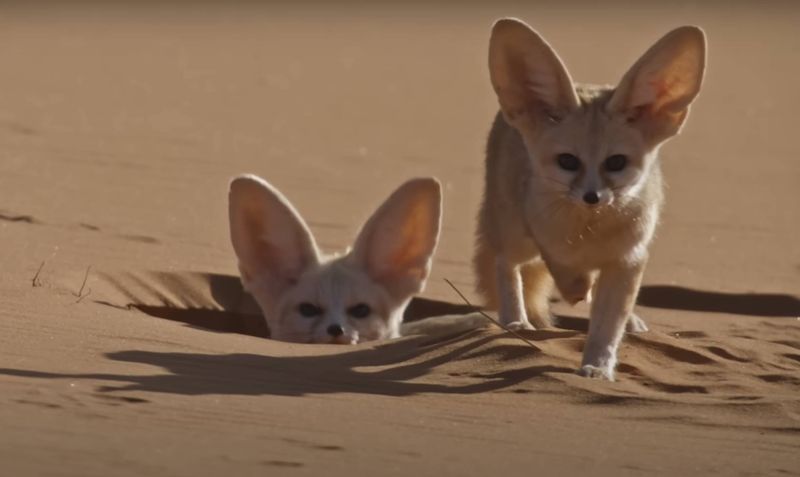
The fennec fox, with its large ears and sandy-colored fur, is a master of the desert. These small foxes create burrows to escape the intense heat of their environment.
Their large ears help dissipate heat and locate prey underground. Fennec foxes are nocturnal, hunting at night and retreating to their burrows during the day. Their ability to thrive in harsh desert conditions is truly remarkable. Moreover, they have a keen sense of hearing, capable of detecting insects and small animals moving underground.
Burrowing Owl
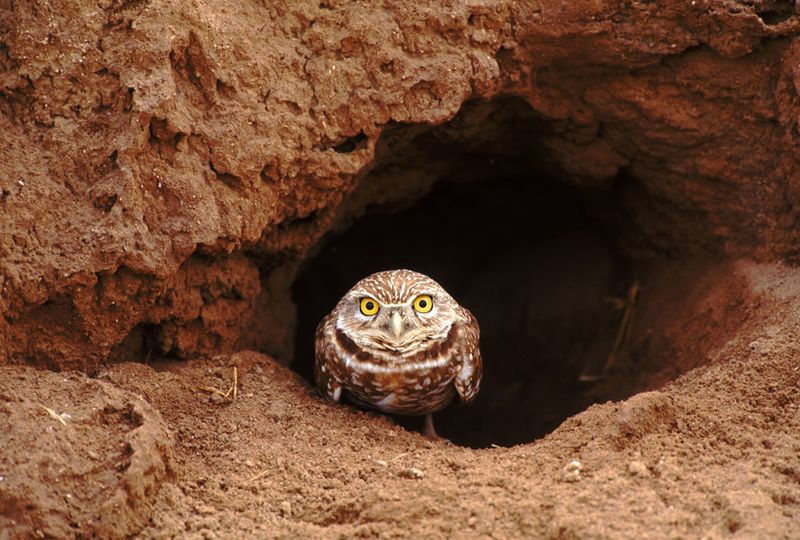
Burrowing owls are unique among owls, as they live in burrows dug by themselves or other animals. These small owls are found in grasslands and deserts, often seen standing at the entrance of their burrows.
They hunt during the day and night, preying on insects and small mammals. Burrowing owls have adapted to life underground, with long legs for running and digging. Did you know? These owls sometimes decorate their burrows with animal dung to attract insects, which they then eat.
Star-nosed Mole
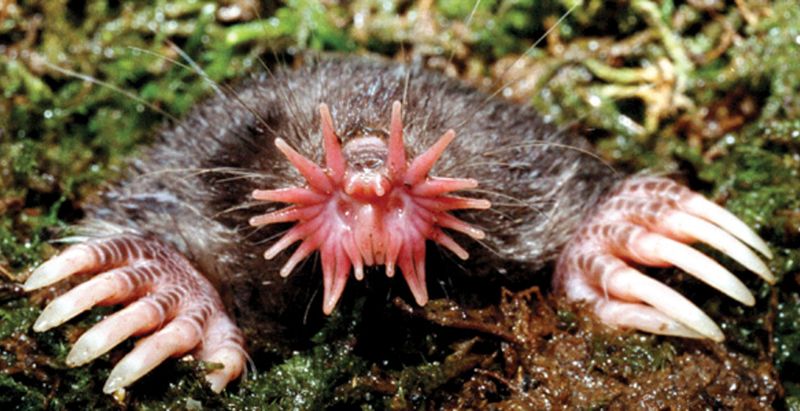
The star-nosed mole is easily recognized by its star-shaped nose, equipped with 22 pink appendages. This extraordinary organ is highly sensitive, allowing the mole to detect prey quickly.
Living in wet lowland areas, these moles can also swim, making them versatile hunters. Their burrowing speed is impressive, and they can even detect seismic waves. Did you know? The star-nosed mole’s nose is one of the most sensitive touch organs in the animal kingdom, enabling it to hunt efficiently underground.
Bilby
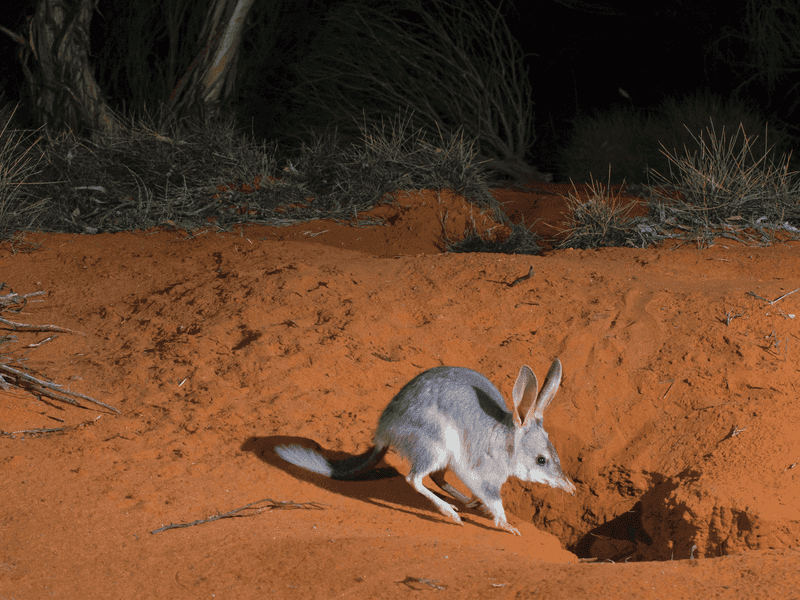
Bilbies, with their long ears and soft gray fur, are nocturnal marsupials found in Australia’s arid regions. They dig extensive burrows to escape predators and the harsh sun.
Their burrows provide a constant temperature, crucial for survival in extreme climates. Bilbies play a vital role in their ecosystem by aerating the soil and dispersing seeds. Unfortunately, their numbers are declining due to habitat loss and predators. Conservation efforts are in place to protect these charming creatures, often called “Easter bilbies.”
Sand Cat
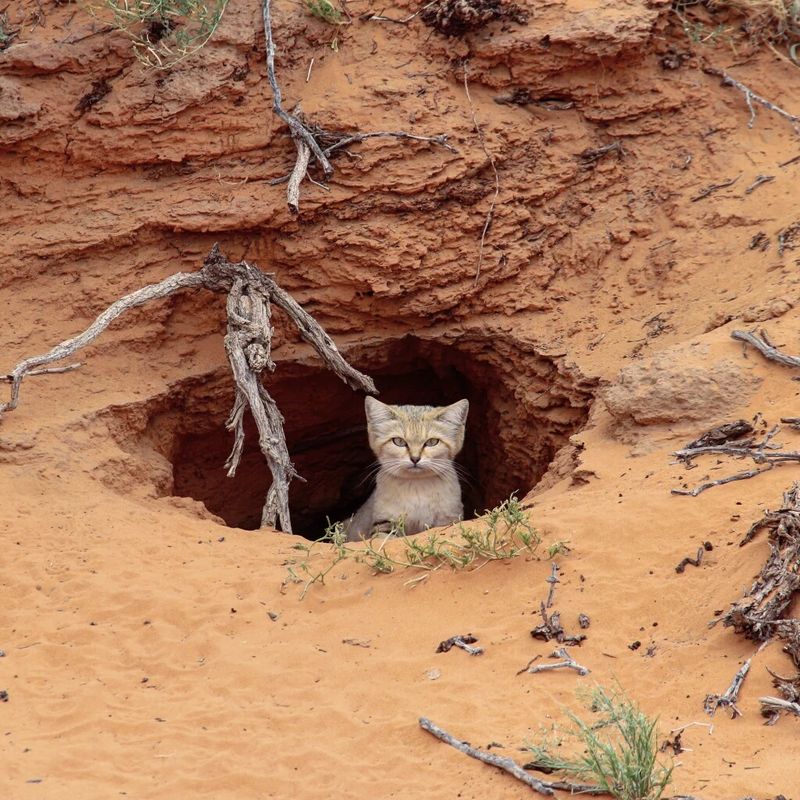
Sand cats are elusive felines adapted to desert life. Their sandy-colored fur provides excellent camouflage in their arid habitats. Sand cats dig burrows to escape the desert’s extreme temperatures.
They are nocturnal hunters, preying on rodents, birds, and insects. Unlike other cats, sand cats can survive without water for long periods, obtaining moisture from their prey. Their ability to thrive in inhospitable environments is impressive. Interestingly, sand cats have thick fur on their feet, protecting them from hot sand.
Cape Ground Squirrel
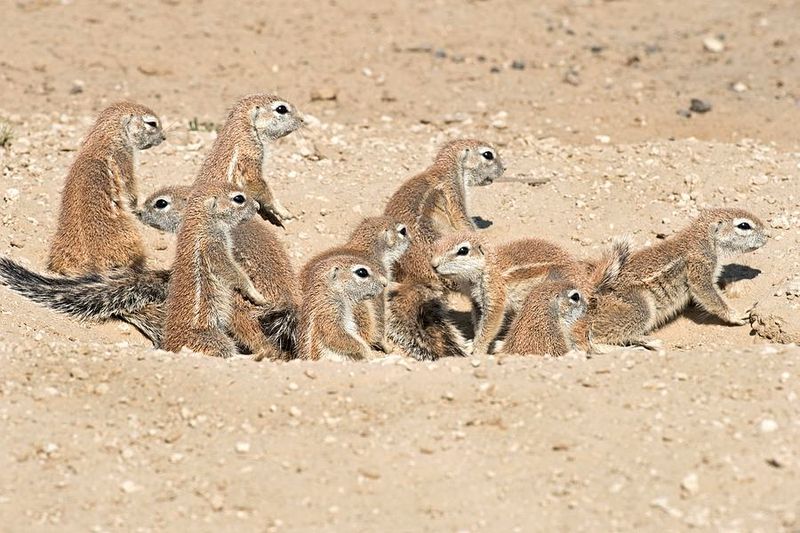
Cape ground squirrels are social rodents found in southern Africa. They live in burrows, which offer protection from predators and extreme temperatures.
These squirrels are known for their social behavior, often seen sunning themselves near their burrows. Their diet consists mainly of seeds and insects. Cape ground squirrels play a role in their ecosystem by aerating the soil. Did you know? They use their bushy tails as umbrellas to shield themselves from the sun while foraging.
Aardvark
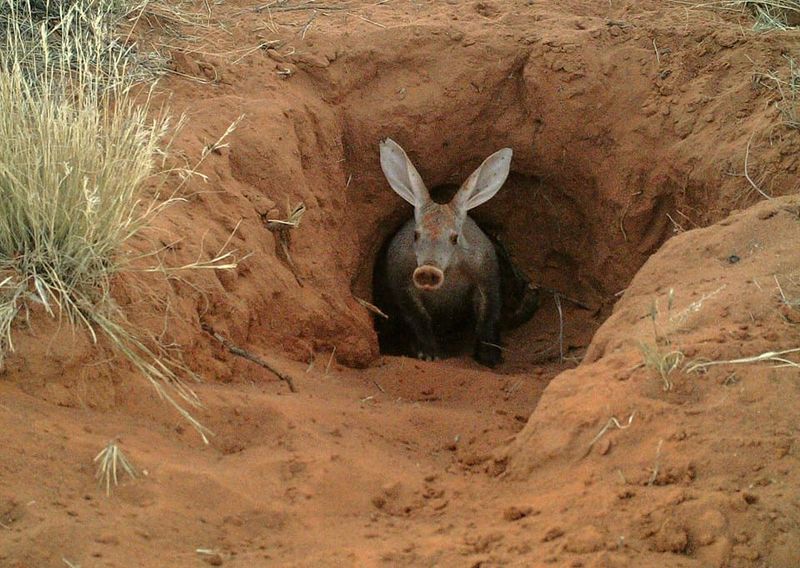
Aardvarks are nocturnal mammals native to Africa, known for their burrowing abilities. With long snouts and powerful limbs, they dig burrows used for shelter and hunting termites.
These solitary animals have a keen sense of smell, aiding them in locating insects. Aardvarks contribute to their ecosystem by controlling termite populations and providing abandoned burrows for other species. Interestingly, aardvarks can close their nostrils to keep out dust while digging, a unique adaptation for life underground.
Gopher Tortoise
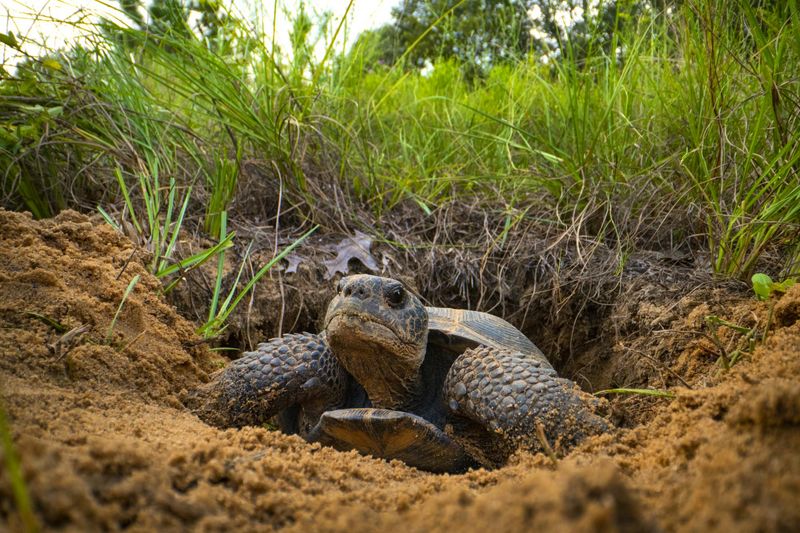
Gopher tortoises are reptiles found in the southeastern United States. They dig extensive burrows, which provide shelter from predators and extreme weather conditions.
Their burrows also serve as habitats for hundreds of other species, making them a keystone species. Gopher tortoises are herbivorous, feeding on grasses and wildflowers. Their conservation is crucial, as they play a significant ecological role. Did you know? Gopher tortoises can live up to 60 years in the wild, thanks to their protected burrows.

